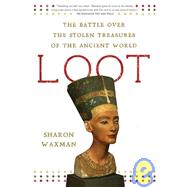
Note: Supplemental materials are not guaranteed with Rental or Used book purchases.
Purchase Benefits
What is included with this book?
Sharon Waxman is a former culture correspondent for The New York Times and holds a master’s degree in Middle East studies from Oxford University. She covered Middle Eastern and European politics and culture for ten years before joining The Washington Post and then The New York Times to report on Hollywood and other cultural news. She is the author of Rebels on the Backlot, and the CEO and founder of The Wrap News.
The New copy of this book will include any supplemental materials advertised. Please check the title of the book to determine if it should include any access cards, study guides, lab manuals, CDs, etc.
The Used, Rental and eBook copies of this book are not guaranteed to include any supplemental materials. Typically, only the book itself is included. This is true even if the title states it includes any access cards, study guides, lab manuals, CDs, etc.